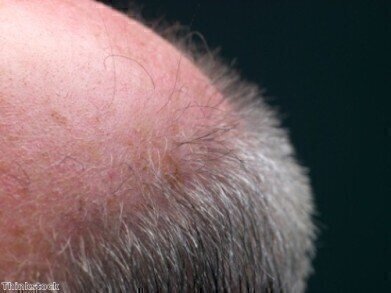-
 The new technique could be used to successfully grow hair on humans
The new technique could be used to successfully grow hair on humans
News & Views
Human hair successfully grown on mice
Oct 22 2013
Scientists have successfully managed to grow human hair on the backs of mice in a new laboratory experiment. The recent breakthrough could help to develop a treatment for those suffering from baldness.
Researchers from Columbia University Medical Center in the US and Durham University in the UK have worked together to successfully grow human hair on the backs of mice. Cells that are found in the human scalp that are able to develop into hair follicles were cloned before being transplanted into mice.
The study, published in the journal 'Proceedings of the National Academy of Sciences', found that human hair was able to grow on the mice from the transplanted cells for at least six weeks. Although this looks like it could be a promising treatment for those that have experienced dramatic hair loss, more work has to be done before the technique can be tested on humans.
According to Professor Angela Christiano, from Columbia University Medical Center, the treatment works in a different way to others that have focussed on hair loss. While previous treatments have been developed to try and slow the loss of hair, the new treatment helps to create new hair follicles to recover from the condition, she said.
The research could “make hair transplantation available to individuals with a limited number of follicles, including those with female-pattern hair loss, scarring alopecia, and hair loss due to burns,” Professor Christiano continued.
Human dermal papilla cells - those that create hair follicles - were cloned in clumps before being transferred onto patches of human skin and transplanted into the mice. The process resulted in hair growth in five out of seven tests.
In order to fully test how successful the hair growth was, the skin used in the transplant process was taken from the foreskins of circumcised infants in order to test if hair was able to grow from skin that is 100 per cent hairless. The dermal papilla cells were taken from seven men that were having hair transplant treatment.
Digital Edition
Lab Asia 31.2 April 2024
April 2024
In This Edition Chromatography Articles - Approaches to troubleshooting an SPE method for the analysis of oligonucleotides (pt i) - High-precision liquid flow processes demand full fluidic c...
View all digital editions
Events
May 14 2024 Oklahoma City, OK, USA
May 15 2024 Birmingham, UK
May 21 2024 Lagos, Nigeria
May 22 2024 Basel, Switzerland
Scientific Laboratory Show & Conference 2024
May 22 2024 Nottingham, UK











.jpg)





